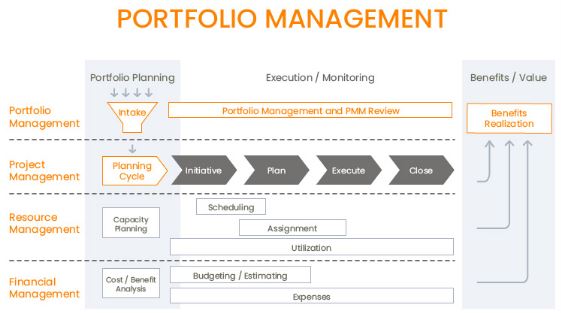An Examination into the Benefits of Risk Management on Investments and Portfolio Assets (2012)
Portfolio Management Benefits Dissertation – A financial investment, contrary to a real investment which involves tangible assets such as land or factories, is an allocation of money with contracts whose values are supposed to increase over time. Therefore, a security is a contract to receive prospective benefits under stated conditions like stocks or bonds. The two main attributes that distinguish securities are time and risk. Usually, the interest rate or rate of return is defined as the gain or loss of the investment divided by the initial value of the investment.
An investment always contains some sort of risk. Therefore, the higher an investor considers the risk of a security, the higher the rate of return or premium the investor demands. The financial assets can be divided into two categories i.e., traditional and alternative investments. The main traditional assets are cash, fixed-income securities, and stocks. For short-term borrowing, governments and corporations issue securities with a year or less to maturity. This market, where governments and corporations manage their short-term cash needs, is called money market.
Two important money market interest rates are the London Interbank Offered Rate (LIBOR) and the interest rate on Treasury Bills. The long-term borrowing needs of corporations and governments are met by issuing bonds. A bond contract provides periodic coupon payments and redemption value at maturity to the bondholder.
Bonds are either traded over-the-counter or in secondary bond markets. Stocks are issued by corporations, which convey rights to the owner. The stock owners elect the board of directors and have claims on the earnings of the company. The stock holders are compensated with cash dividends, whose amount is determined by the board of directors. Public trading of stocks (shares) is regulated by the government. The process of arranging the public sale of stocks of a private firm is called initial public offering (IPO). In this context, privately held stocks are referred to as private equity.
Real estate investments are also usually found in institutional portfolios, either direct or indirect via investment trusts. Since the end of the Bretton-Woods agreement for fixed exchange rates in 1973, foreign exchange or derivatives on foreign exchange rates are also found in portfolios. This is usually the case for international investors who want to hedge against currency risks. As alternative investments we consider hedge funds, managed futures, private equity, physical assets (e.g. commodities), and securitized products (e.g. mortgages).
- 15,000 words – 70 pages in length
- Good use of literature
- Well written throughout
- Good in depth analysis
- Includes questionnaire
- Ideal for finance students
1. Introduction
2. Literature Review
Portfolio Management
Why Portfolio Management?
Benefits Of The Portfolio Management Program
Risk Management And Measures
Types Of Risk
Systematic Risk
Unsystematic Risk
Credit/Default Risk
Country Risk
Foreign Exchange Risk
Interest Rate Risk
Reinvestment Rate Risk
Liquidity Risk
Political Risk
Market Risk
Price Risk
Inflation Risk (Purchasing Power Risk)
Business Risk
Determining The Risk Return Trade-Off
3. Theories Of Investment
Modern Portfolio Theory
Capital Asset Pricing Model
Assumptions of CAPM
Shortcomings of CAPM
Beta
Portfolio Construction
Determining The Appropriate Asset Allocation
Achieving The Portfolio Designed In Step
Reassessing Portfolio Weightings
Rebalancing Strategically
Importance Of Diversification
4. Modes Of Investment
Asset
Fixed Assets
Assets
Other Assets
Security
Debt
Equity
Hybrid
Preference Shares
Convertibles
Equity Warrants
The Securities Market
Public Offer And Private Placement
Bonds
Debentures
Types Of Debentures
Mutual Funds
Types Of Mutual Funds
Insurance
Types Of Insurance
Gold
The Returns From Gold
Gold Prices In India
How To Buy Gold
Tax Implications
The Prospects For Gold
Real Estate
Scenario In India
Why Invest In Indian Real Estate?
Pitfalls That May Be Encountered
Art
5. Asset Selection And Risk Profiling
The Asset Selection Decision
Risk Profiling
Time Horizon
Bankroll
Investment Risk Pyramid
Tier 1 – Base Of The Pyramid
Tier 2 – Middle Portion
Tier 3 – Summit
6. Research Methodology
Sampling
Sample Size
Type Of Sampling
Method Of Data Collection
Primary Data
Secondary Data
7. Findings And Analysis
Based On The Risk Profile Of The Investor
Moderate Risk Profile
High Risk Profile
Very High Risk
Plan Your Portfolio
Growth Portfolio
Conservative Portfolio
Balanced Portfolio
Short Term Portfolio
8. Conclusion
Assess Yourself
Try To Understand Where The Money Is Going
Don’t Rush In Picking Funds, Think First
Invest Don’t Speculate
Don’t Put All The Eggs In One Basket
Be Regular
Do Your Homework
Find The Right Investments
Keep Track Of Your Investments
Know When To Sell Your Investment
Bibliography
Appendices

